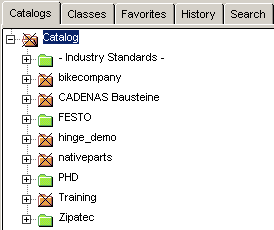Manual
Login
Our 3D CAD supplier models have been moved to 3Dfindit.com, the new visual search engine for 3D CAD, CAE & BIM models.
You can log in there with your existing account of this site.
The content remains free of charge.

Top Links
Manual
Following entry under Display condition for parts selection:
PRJ_PATH LIKE 'festo/%' OR PRJ_PATH LIKE 'phd/%'
If in this case the function Preferred rows on/off is enabled, then, in the index tree, only the directories "FESTO" and "PHD" are shown in green, even if other directories have also links to the LinkDB.
![[Note]](/community/externals/manuals/%24%7Bb2b:MANUALPATH/images/note.png) |
Note |
|---|---|
The standard behavior is that all directories that have at least one part connected to the LinkDB are displayed in green. | |
![[Note]](/community/externals/manuals/%24%7Bb2b:MANUALPATH/images/note.png) |
Note |
|---|---|
The Display condition for parts selection only matches if parts with numbers are found in the various directories! | |
![[Note]](/community/externals/manuals/%24%7Bb2b:MANUALPATH/images/note.png) |
Note |
|---|---|
Detailed information for the application of constants, Fortran syntax and logic operators is found under Section 7.1, “Constants, Functions, Operators, mathematical expressions ”. | |








